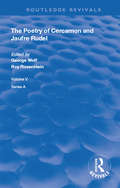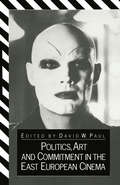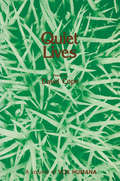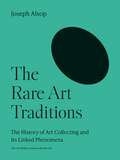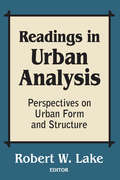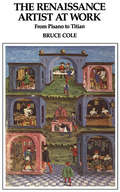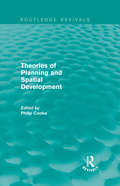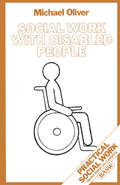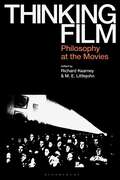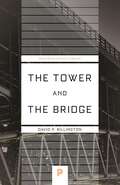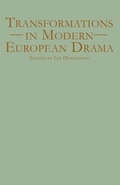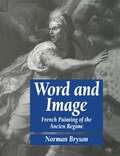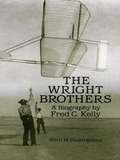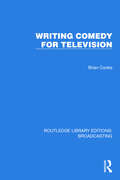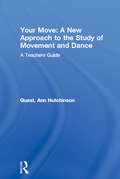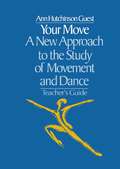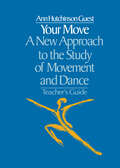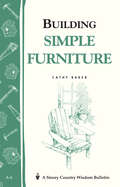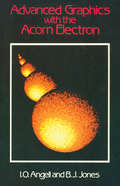- Table View
- List View
The Poetry of Cercamon and Jaufre Rudel (Routledge Revivals)
by George Wolf Roy RosensteinPublished in 1983, Wolf and Rosenstein have delved into the poetry writings in detail of Cercamon and Jaufre Rudel, with detailed textual notes on the poems, exploring the individual poets' lives and looking at the translation of the writings.
Quiet Lives (Vox Humana)
by David CopeI have been much absorbed in David Cope's poetry as necessary continuation of tradition of lucid grounded sane objectivism in poetry following the visually solid practice of Charles Reznikoff & William Carlos Williams. Though the notions of 'objectivism' were common for many decades among U. S. poets, there is not a great body of direct-sighted "close to the nose" examples of poems that hit a certain ideal objectivist mark-"No ideas but in things" consisting of "minute particulars" in which "the natural object is always the adequate symbol", works of language wherein "the mind is clamped down on objects", and where these "Things are symbols of themselves. " The poets I named above specialized in this refined experiment, and Pound touched on the subject as did Zukofsky and Bunting, and lesser but inter esting figures such as Marsden Hartley in his little known poetry , and more romantic writers such as D. H. Lawrence. In this area of phanopoeiac "focus," the sketching of particulars by which a motif is recognizably significant, David Cope has made, by the beginning of his third decade, the largest body of such work that I know of among poets of his own generation. Allen Ginsberg Table of Contents Foreword, Allen Ginsberg. . . . . . . . . . . . . . . . . . . . . . . . . . . . . . . . v THE STARS The Line-up. . . . . . . . . . . . . . . . . . . . . . . . . . . . . . . . 2 . . . . . . . . . . . . Empty Street . . . . . . . . . . . . . . . . . . . . . . . . . . . . . . . . . . . . . . . . . . . 3 The River. . . . . . . . . . . . . . . . . . . . . . . . . . . . . . . . . . . . . . . . . . . . . . 4 Down on the Farm . . . . . . . . . . . . . . . . . . . . . . . . . . . . . . . . . . . . . . 5 The Storm. . . . . . . . . . . . . . . . . . . . . . . . . . . . . . . . . . . . . . . . . . . . . 6 American Dream. . . . . . . . . . . . . . . . . . . . . . . . . . . . . . 7 . . . . . . . . . . Baseball. . . . . . . . . . . . . . . . . . . . . . . . . . . . . . . . . . . 8 . . . . . . . . . . . . Crash. . . . . . . . . . . . . . . . . . . . . . . . . . . . . . . . . . . . . . . . . . . . . . . . 9 . Lunch Hour. . . . . . . . . . . . . . . . . . . . . . . . . 9 . . . . . . . . . . . . . . . . . . . Winter Camp. . . . . . . . . . . . . . . . . . . . . . . . . . 10 . . . . . . . . . . . . . . . . . A Circle of Lights . . . . . . . . . . . . . . . . . . . . . . . . . . . . 12 . . . . . . . . . . GO Labor Day . . . . . . . . . . . . . . . . . . . . . . . . . . . . . . . . . . 14 . . . . . . . . . . . Peace. . . . . . . . . . . . . . . . . . . . . . . . . . . . . . . . . . . . 15 . . . . . . . . . . . . .
The Rare Art Traditions: The History of Art Collecting and Its Linked Phenomena (The A. W. Mellon Lectures in the Fine Arts #27)
by Joseph AlsopA cultural and social history of art collecting, art history, and the art marketIn The Rare Art Traditions, Joseph Alsop offers a wide-ranging cultural and social history of art collecting, art history, and the art market. He argues that art collecting is the basic element in a remarkably complex and historically rare behavioral system, which includes the historical study of art, the market for buying and selling art, museums, forgery, and the astonishing prices commanded by some works of art. The Rare Art Traditions tells the story of three important traditions of art collecting: the classical tradition that began in Greece, the Chinese tradition, and the Western tradition. The result is a major original contribution to art history.
Readings in Urban Analysis: Perspectives on Urban Form and Structure
by Robert W. LakeThis important work brings together a range of perspectives in contemporary urban analysis. The field of urban analysis is characterized by the multiplicity of approaches, philosophies, and methodologies employed in the examination of urban structure and urban problems. This fragmentation of perspectives is not simply a reflection of the multifaceted and complex nature of the city as subject matter. Nor is it a function of the variety of disciplines such as geography, planning, economics, history, and sociology. Cross-cutting all of these issues and allegiances has been the emergence in recent years of a debate on fundamental issues of philosophy, ideology, and basic assumptions underlying the analysis of urban form and structure. The notion of urban analysis Robert W. Lake discusses focuses on the spatial structure of the city, its causes, and its consequences. At issue is the city as a spatial fact: a built environment with explicit characteristics and spatial dimensions, a spatial distribution of population and land uses, a nexus of locational decisions, an interconnected system of locational advantages and disadvantages, amenities and dis-amenities. Beginning with landmark articles in neo-classical and ecological theory, the reader covers the latest departures and developments. Separate sections cover political approaches to locational conflict, institutional influences on urban form, and recent Marxist approaches to urban analysis. Among the topics included are community strategies in locational conflict, the political economy of place, the role of government and the courts, institutional influences in the housing market, and the relationship between urban form and capitalist development. This is a valuable introductory text for courses in urban planning, urban geography, and urban sociology.
Readings in Urban Analysis: Perspectives on Urban Form and Structure
by Robert W. LakeThis important work brings together a range of perspectives in contemporary urban analysis. The field of urban analysis is characterized by the multiplicity of approaches, philosophies, and methodologies employed in the examination of urban structure and urban problems. This fragmentation of perspectives is not simply a reflection of the multifaceted and complex nature of the city as subject matter. Nor is it a function of the variety of disciplines such as geography, planning, economics, history, and sociology. Cross-cutting all of these issues and allegiances has been the emergence in recent years of a debate on fundamental issues of philosophy, ideology, and basic assumptions underlying the analysis of urban form and structure. The notion of urban analysis Robert W. Lake discusses focuses on the spatial structure of the city, its causes, and its consequences. At issue is the city as a spatial fact: a built environment with explicit characteristics and spatial dimensions, a spatial distribution of population and land uses, a nexus of locational decisions, an interconnected system of locational advantages and disadvantages, amenities and dis-amenities. Beginning with landmark articles in neo-classical and ecological theory, the reader covers the latest departures and developments. Separate sections cover political approaches to locational conflict, institutional influences on urban form, and recent Marxist approaches to urban analysis. Among the topics included are community strategies in locational conflict, the political economy of place, the role of government and the courts, institutional influences in the housing market, and the relationship between urban form and capitalist development. This is a valuable introductory text for courses in urban planning, urban geography, and urban sociology.
The Renaissance Artist At Work: From Pisano To Titian (Icon Editions Ser.)
by Bruce ColeThis book gives the necessary background for the study and appreciation of Italian painting and sculpture from about 1250 to 1550. It tells how the artists learned their craft, the organization of their workshops, and the guilds they belonged to; how their customers or patrons treated them and where their work was displayed?churches, civic buildings, or private homes. The book discusses how art was made?tempera, oil, panel, canvas, fresco; it surveys the characteristic types of Renaissance art?altarpieces, portraits, tombs, busts, doors fountains, medals, etc.
Routledge Revivals: Theories of Planning and Spatial Development (Routledge Revivals)
by Philip CookeFirst published in 1983, this book attempts to unify two bodies of theory which had become severely disjointed. Theories of the planning process had become detached from those of the urban and regional processes which are the subject of planning intervention. The author argues that major weaknesses of planning intervention in cities and regions have resulted from this split, and shows how it is possible to develop an integrated theory of the relationship between planning and spatial development. The mechanism which helps to unify the two fields is the division of labour. This poses problems for the planning system as its spatial requirements change but it depends upon the state planning framework in order to overcome those obstacles — hindering its capacity for spatial reorganisation. This book offers a thorough analysis of these obstacles and requirements by references to contemporaneous theoretical advances in the study of the development process, the state (especially at sub-national level), and the labour market. It is argued that the way capital makes use of urban and regional space can be explained by using the theoretical framework which is developed and, on this basis, point to certain innovative ways in which the processes underlying urban and regional de-industrialisation may be countered.
Routledge Revivals: Theories of Planning and Spatial Development (Routledge Revivals)
by Philip CookeFirst published in 1983, this book attempts to unify two bodies of theory which had become severely disjointed. Theories of the planning process had become detached from those of the urban and regional processes which are the subject of planning intervention. The author argues that major weaknesses of planning intervention in cities and regions have resulted from this split, and shows how it is possible to develop an integrated theory of the relationship between planning and spatial development. The mechanism which helps to unify the two fields is the division of labour. This poses problems for the planning system as its spatial requirements change but it depends upon the state planning framework in order to overcome those obstacles — hindering its capacity for spatial reorganisation. This book offers a thorough analysis of these obstacles and requirements by references to contemporaneous theoretical advances in the study of the development process, the state (especially at sub-national level), and the labour market. It is argued that the way capital makes use of urban and regional space can be explained by using the theoretical framework which is developed and, on this basis, point to certain innovative ways in which the processes underlying urban and regional de-industrialisation may be countered.
The Sack of Rome, 1527 (The A. W. Mellon Lectures in the Fine Arts #26)
by André ChastelFrom a leading art historian of Renaissance Italy, a compelling account of the artistic and cultural impact of the sack of sixteenth-century RomeIn this illustrated account of the sack of Rome as a cultural and artistic phenomenon, André Chastel reveals the historical ambiguities of preceding events and the traumatic contrast between the flourishing world of art under Pope Clement VII and the city after it was looted by the troops of Emperor Charles V in 1527. Chastel illuminates the cultural repercussions of the humiliation of Rome, emphasizing the spread or “Europeanization” of the Mannerist style by artists who fled the city—including Parmigianino, Rosso, Polidoro, Peruzzi, and Perino del Vaga. At the same time, Clement’s critics used the new media of printing and engraving to win over the people with caricatures and satirical writings, while Rome responded with monumental works affirming the legitimacy of the pope’s temporal power. Chastel explores both the world that was lost by the sack and the great works of art created during Rome’s recovery.
Social Work with Disabled People (Practical Social Work Series)
by Michael OliverThis book has been substantially revised to take into account the legislative changes since 1983 and the theoretical developments in the field of disability. Whilst continuing to highlight the negative impact of welfare policy on the lives of disabled people, it develops arguments as to how social work can contribute to the removal of disabling barriers and looks at the implications that an anti - disablist practice would have for the education and training of social workers and the management of welfare agencies.
Thinking Film: Philosophy at the Movies
by Richard Kearney and M. E. LittlejohnHailed as one of America's original art forms, film has the distinctive character of crossing high and low art. But film has done more than this. According to American philosopher Stanley Cavell, film was also a place where America in the 1930s and 1940s did its thinking, a tradition that was taken up and enriched throughout world cinema. Can film indeed think? That is, can film do the work of philosophy?Following Cavell's lead to think along the tear of the analytic-continental traditions, this book draws from both sides of the philosophical divide to reflect on this question. Spanning generations and disciplines, pondering everything from art house classics to mainstream blockbusters, Thinking Film: Philosophy at the Movies aims to fling open the doors to this conversation on all sides. Inquiring into both philosophy's word on film and film's word to philosophy, the interdisciplinary dialogue of this book traverses the conceptual and the particular as it considers how film catalyzes our thinking and sets us talking. After viewing the world through film, we find our world--and ourselves--transformed by deeper understanding and new possibilities.This book aims to provide a novel and engaging way in to thinking with and about this enduringly popular art form.
The Tower and the Bridge: The New Art of Structural Engineering (Princeton Science Library #130)
by David P. BillingtonAn essential exploration of the engineering aesthetics of celebrated structures from long-span bridges to high-rise buildingsWhat do structures such as the Eiffel Tower, the Brooklyn Bridge, and the concrete roofs of Pier Luigi Nervi have in common? According to The Tower and the Bridge, all are striking examples of structural art, an exciting area distinct from either architecture or machine design. Aided by stunning photographs, David Billington discusses the technical concerns and artistic principles underpinning the well-known projects of leading structural engineer-artists, including Othmar Ammann, Félix Candela, Gustave Eiffel, Fazlur Khan, Robert Maillart, John Roebling, and many others. A classic work, The Tower and the Bridge introduces readers to the fundamental aesthetics of engineering.
The Tower and the Bridge: The New Art of Structural Engineering (Princeton Science Library #130)
by David P. BillingtonAn essential exploration of the engineering aesthetics of celebrated structures from long-span bridges to high-rise buildingsWhat do structures such as the Eiffel Tower, the Brooklyn Bridge, and the concrete roofs of Pier Luigi Nervi have in common? According to The Tower and the Bridge, all are striking examples of structural art, an exciting area distinct from either architecture or machine design. Aided by stunning photographs, David Billington discusses the technical concerns and artistic principles underpinning the well-known projects of leading structural engineer-artists, including Othmar Ammann, Félix Candela, Gustave Eiffel, Fazlur Khan, Robert Maillart, John Roebling, and many others. A classic work, The Tower and the Bridge introduces readers to the fundamental aesthetics of engineering.
Word And Image (PDF): French Painting Of The Ancien Régime
by Norman BrysonThis 1982 book, now recognised as a classic, has done perhaps more than any other single work to change the face of art criticism in the twentieth century. Whereas previous books on French painting looked only at the history of painting as an evolution of artistic styles (baroque, rococo, neo-classical, and so on), Norman Bryson examines the evolution of narrative styles: the kinds of stories paintings tell, the ways they communicate their information, the different techniques of presenting the body as an instrument for incorporating textual messages. The procedure is applied to a number of painters: LeBrun, Watteau, Greuze, David and others, and the author demonstrates that the relation of formal and 'literary' elements was regarded by painters and critics in the eighteenth century as the primary issue to be confronted in the production of a painting.
The Wright Brothers: A Biography
by Fred C. KellyIn this fascinating, highly readable biography, Fred C. Kelly, a former newspaperman, author, and an old friend of the Wrights, tells the story of the two brilliant, dedicated, flight-obsessed bicycle mechanics from Ohio who first realized mankind's age-old dream of conquering the skies. Long considered the definitive Wright biography (the manuscript was read and approved by Orville Wright), this book recounts the Wrights' small-town boyhood, their early interest in all things mechanical, the establishment of the Wright Cycle Shop, and the complete behind-the-scenes story of how they designed, built, tested, and flew (December 1903) the first "Flyer."Enhanced with sixteen rare photographs, Mr. Kelly's engaging account avoids minute technical description, yet describes simply and clearly the technological innovations that enabled the two brothers to succeed where so many others had failed. Anyone interested in the mechanics of flight or early aviation will find this volume a splendid introduction to the Wright brothers and their epochal achievement.
Writing Comedy for Television (Routledge Library Editions: Broadcasting #40)
by Brian CookeWriting Comedy for Television (1983) is a practical, step-by-step manual about how and what to write. It contains many examples from the scripts of various sitcoms and sketch shows. It demonstrates how to construct a storyline for a series, how to lay out a sketch, who to pitch to, and how a television comedy is put together.
Writing Comedy for Television (Routledge Library Editions: Broadcasting #40)
by Brian CookeWriting Comedy for Television (1983) is a practical, step-by-step manual about how and what to write. It contains many examples from the scripts of various sitcoms and sketch shows. It demonstrates how to construct a storyline for a series, how to lay out a sketch, who to pitch to, and how a television comedy is put together.
Your Move: A Teachers Guide
by Ann Hutchinson GuestThe author takes a new approach to teaching notation through movement exercises, thus enlarging the scope of the book to teachers of movement and choreography as well as the traditional dance notation students. Updated and enlarged to reflect the most recent scholarship and through a series of exercises, this book guides students through: movement, stillness, timing, shaping, accents travelling direction, flexion and extension rotations, revolutions and turns supporting balance relationships. All of these movements are related to notation, so the student learns how to notate and describe the movements as they are performed.
Your Move: A Teachers Guide
by Ann Hutchinson GuestThe author takes a new approach to teaching notation through movement exercises, thus enlarging the scope of the book to teachers of movement and choreography as well as the traditional dance notation students. Updated and enlarged to reflect the most recent scholarship and through a series of exercises, this book guides students through: movement, stillness, timing, shaping, accents travelling direction, flexion and extension rotations, revolutions and turns supporting balance relationships. All of these movements are related to notation, so the student learns how to notate and describe the movements as they are performed.
Your Move: A New Approach to the Study of Movement and Dance
by Ann Hutchinson GuestYour Move: A New Approach to the Study of Movement and Dance establishes a fresh and original framework for looking at dance. In examining the basic elements of dance - the Alphabet of Movement - and using illustrations of movement technique and notation symbols it provides a new way to see, to teach and to choreograph dance. This book gives a list of primary actions upon which all physical activity is gased, focusing on both the functional and expressive sides of movement. It draws upon the author's broad experience in ballet, modern and ethnic dance to reinterpret movement and to shed new light on the role of movement in dance. Your Move is an important book not only for dancers but also for instructors in sport and physical therapy. Each copy of Your Move comes complete with exercise sheets, which can also be purchased separately. A teacher's guide has also been designed providing notes on each chapter, approaches to the exploration of movement, interpretation of the reading studies, additional information of motif description and answers to the exercise sheets. An optional audio cassette, with music written and recorded especially for use with the book, is also available.
Your Move: A New Approach to the Study of Movement and Dance
by Ann Hutchinson GuestYour Move: A New Approach to the Study of Movement and Dance establishes a fresh and original framework for looking at dance. In examining the basic elements of dance - the Alphabet of Movement - and using illustrations of movement technique and notation symbols it provides a new way to see, to teach and to choreograph dance. This book gives a list of primary actions upon which all physical activity is gased, focusing on both the functional and expressive sides of movement. It draws upon the author's broad experience in ballet, modern and ethnic dance to reinterpret movement and to shed new light on the role of movement in dance. Your Move is an important book not only for dancers but also for instructors in sport and physical therapy. Each copy of Your Move comes complete with exercise sheets, which can also be purchased separately. A teacher's guide has also been designed providing notes on each chapter, approaches to the exploration of movement, interpretation of the reading studies, additional information of motif description and answers to the exercise sheets. An optional audio cassette, with music written and recorded especially for use with the book, is also available.
Building Simple Furniture: Storey Country Wisdom Bulletin A-06 (Storey Country Wisdom Bulletin)
by Cathy BakerEASY-TO-BUILD PROJECTS FOR THE WEEKEND WOODWORKER!Look over the variety of simple wood-working projects in the bulletin and you’ll quickly find something that deserves a place in your home. A small table for the hallway, perhaps, or an Adirondack chair or picnic set for the deck or garden? The good news is that you don’t need to be a master carpenter with a basement full of power tools to craft these handsome and practical items. With a few simple hand tools and Cathy Baker’s step-by-step instructions and easy-to-follow illustrations and diagrams, you can build sturdy, durable, beautiful wooden furniture that you and your family will enjoy for years to come. Projects include:· Wall shelf· Small bench· Picnic table and benches· Adirondack chair· Pump lamp· Step stool· Storage box· Side table
